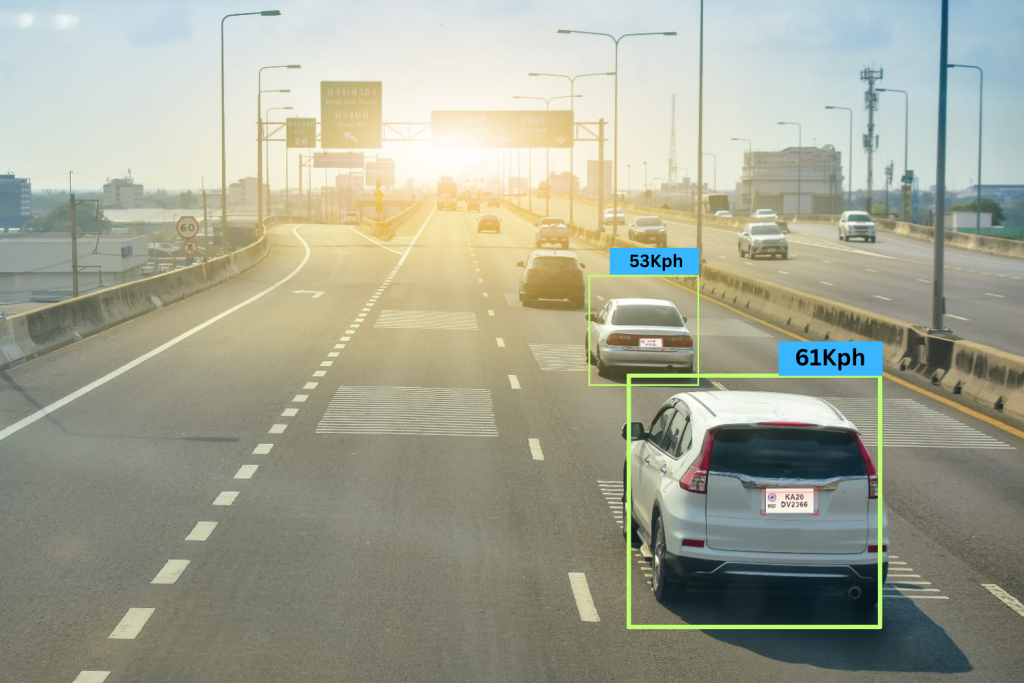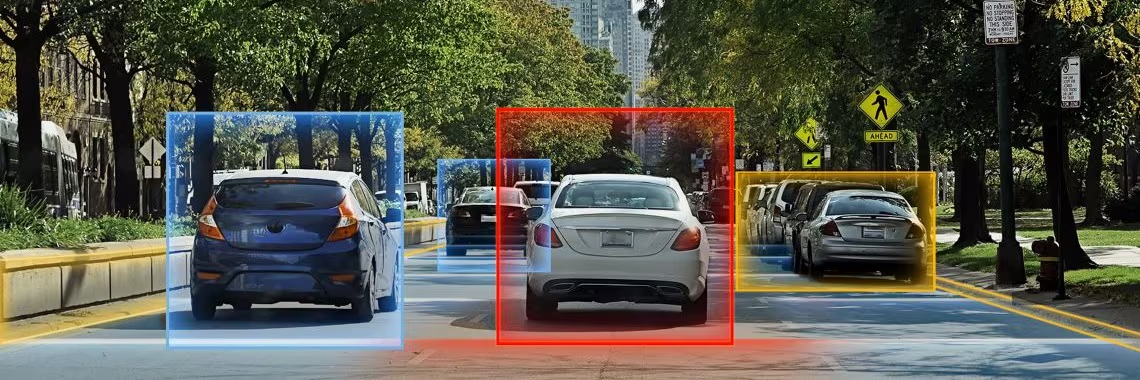The Environmental and Economic Benefits of Using SVD4D-Radar Based Speed Violation Detection System Camera for Traffic Management
Implementing intelligent transportation management systems (ITMS) has emerged as a pivotal strategy in the quest for smarter, safer cities. Among the various technologies deployed in ITMS, radar-based speed violation detection systems have gained significant traction. These systems, designed to monitor and enforce speed limits, offer a dual advantage: enhancing road safety and delivering substantial environmental and economic benefits. This blog delves into the multifaceted advantages of radar-based speed violation detection systems, exploring how they contribute to sustainable urban development.
Table of Contents
Understanding Radar-Based Speed Violation Detection Systems
Radar-based speed violation detection systems utilize radar technology to measure the speed of vehicles. When a vehicle exceeds the pre-set speed limit, the system captures an image of the vehicle, including its license plate, and records the speed and time of the violation. This data is then transmitted to traffic management centers or law enforcement agencies for further action.
These systems are typically integrated with advanced cameras and data processing units, enabling real-time monitoring and automatic detection of speed violations. The accuracy and reliability of radar technology make it an ideal solution for traffic management, especially in urban areas where maintaining safe driving speeds is critical.

Environmental Benefits
Reduction in Fuel Consumption and Emissions Speeding:
not only increases the risk of accidents but also leads to higher fuel consumption and emissions. According to studies, vehicles operating at higher speeds consume more fuel due to increased aerodynamic drag and engine load. By enforcing speed limits through radar-based detection systems, cities can significantly reduce fuel consumption and associated greenhouse gas emissions. This contributes to improved air quality and helps in mitigating the urban heat island effect.
Enhanced Traffic Flow:
Consistent and moderate speeds contribute to smoother traffic flow. Radar-based speed detection systems help maintain uniform speeds across road networks, reducing stop-and-go traffic that is often associated with higher emissions. Smooth traffic flow ensures that vehicles operate more efficiently, leading to lower fuel consumption and reduced emissions. Additionally, it decreases the wear and tear on vehicles, further contributing to environmental sustainability.
Promotion of Eco-Friendly Driving Behaviors:
The presence of radar-based speed detection systems acts as a deterrent to aggressive driving behaviors, such as sudden acceleration and hard braking. These driving habits not only increase the likelihood of accidents but also lead to higher fuel consumption and emissions. By encouraging more eco-friendly driving behaviors, these systems contribute to the overall reduction of the carbon footprint associated with urban transportation.
Economic Benefits
Cost Savings on Fuel:
Reduced fuel consumption translates directly into cost savings for both individual drivers and the broader economy. With radar-based speed detection systems enforcing speed limits, drivers are more likely to adopt fuel-efficient driving practices. This lowers fuel expenses and reduces the country’s dependency on imported oil, positively impacting the national economy.
Lower Accident-Related Costs:
Speeding is a major cause of traffic accidents, which result in significant economic costs, including medical expenses, property damage, and loss of productivity. By effectively enforcing speed limits, radar-based detection systems can lead to a reduction in the frequency and severity of accidents. This translates into substantial savings in accident-related costs for individuals, insurance companies, and public health systems.
Improved Road Infrastructure Longevity:
Excessive speeding can cause increased wear and tear on road infrastructure, leading to more frequent maintenance and repair needs. Radar-based speed violation detection systems help preserve road infrastructure by ensuring that vehicles travel within safe speed limits. This not only extends the lifespan of roads and bridges but also reduces the financial burden on municipalities and taxpayers for infrastructure maintenance.
Revenue Generation Through Fines:
The enforcement of speed limits through radar-based detection systems can generate significant revenue for municipalities through fines collected from speed violators. These funds can be reinvested into further improving traffic management infrastructure, public transportation systems, and other community services. This creates a positive feedback loop where the revenue generated from fines contributes to the overall enhancement of urban mobility and safety.
Job Creation and Economic Stimulation:
The deployment, maintenance, and management of radar-based speed violation detection systems create job opportunities in various sectors, including technology, engineering, and law enforcement. This stimulates economic growth by providing employment and supporting local businesses involved in the production, installation, and servicing of these systems.

Challenges and Considerations
While radar-based speed violation detection systems offer numerous benefits, their implementation is not without challenges. Some of the key considerations include:
Privacy Concerns:
The use of cameras and data collection in radar-based speed detection systems raises privacy concerns among citizens. It is essential to establish clear policies and regulations regarding data usage, storage, and sharing to address these concerns and ensure public trust.
Initial Investment Costs:
The deployment of radar-based speed violation detection systems requires significant initial investment in technology, infrastructure, and training. However, the long-term benefits in terms of reduced accidents, fuel savings, and revenue generation can outweigh these initial costs.
Public Acceptance:
Gaining public acceptance and support for radar-based speed detection systems can be challenging, especially if they are perceived as revenue-generating tools rather than safety measures. Public awareness campaigns highlighting the safety and environmental benefits of these systems can help in building community support.
Technical Limitations:
Radar-based systems may face technical limitations, such as interference from weather conditions or obstacles. Continuous advancements in technology and regular maintenance are necessary to ensure the accuracy and reliability of these systems.

Future Directions
The future of radar-based speed violation detection systems lies in further technological advancements and integration with other intelligent transportation solutions. Some promising directions include:
Integration with Connected and Autonomous Vehicles:
The integration of radar-based speed detection systems with connected and autonomous vehicles (CAVs) can enhance traffic management and safety. CAVs equipped with speed detection capabilities can communicate with traffic management systems, enabling more efficient and safer driving practices.
Artificial Intelligence and Machine Learning:
Incorporating artificial intelligence (AI) and machine learning (ML) into radar-based speed detection systems can enhance their accuracy and efficiency. AI and ML algorithms can analyze traffic patterns, predict potential violations, and optimize enforcement strategies, leading to more effective traffic management.
Expansion to Broader Traffic Management Applications:
Radar-based speed detection systems can be expanded to monitor other traffic violations, such as red-light running and illegal lane changes. This holistic approach can further enhance road safety and traffic efficiency.
Conclusion
Radar-based speed violation detection systems represent a significant advancement in traffic management technology, offering substantial environmental and economic benefits. By reducing fuel consumption and emissions, promoting eco-friendly driving behaviors, and lowering accident-related costs, these systems contribute to sustainable urban development. Furthermore, the revenue generated from fines and the economic stimulation through job creation underscores their value as a smart investment for cities.
As cities continue to evolve and embrace intelligent transportation management systems, radar-based speed violation detection systems will play a crucial role in creating safer, more efficient, and environmentally friendly urban environments. By addressing challenges and leveraging technological advancements, cities can maximize the benefits of these systems, paving the way for a smarter and more sustainable future.

